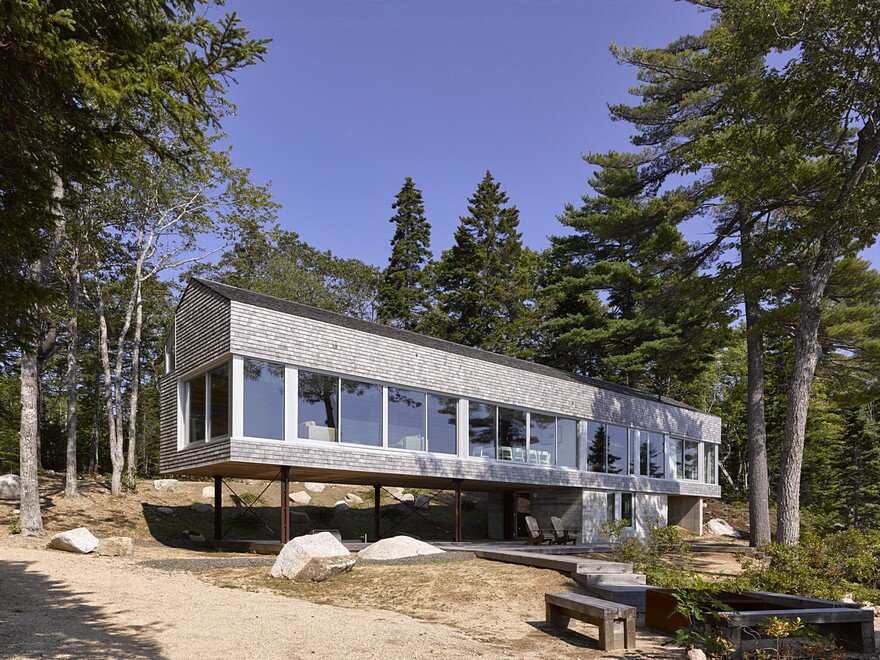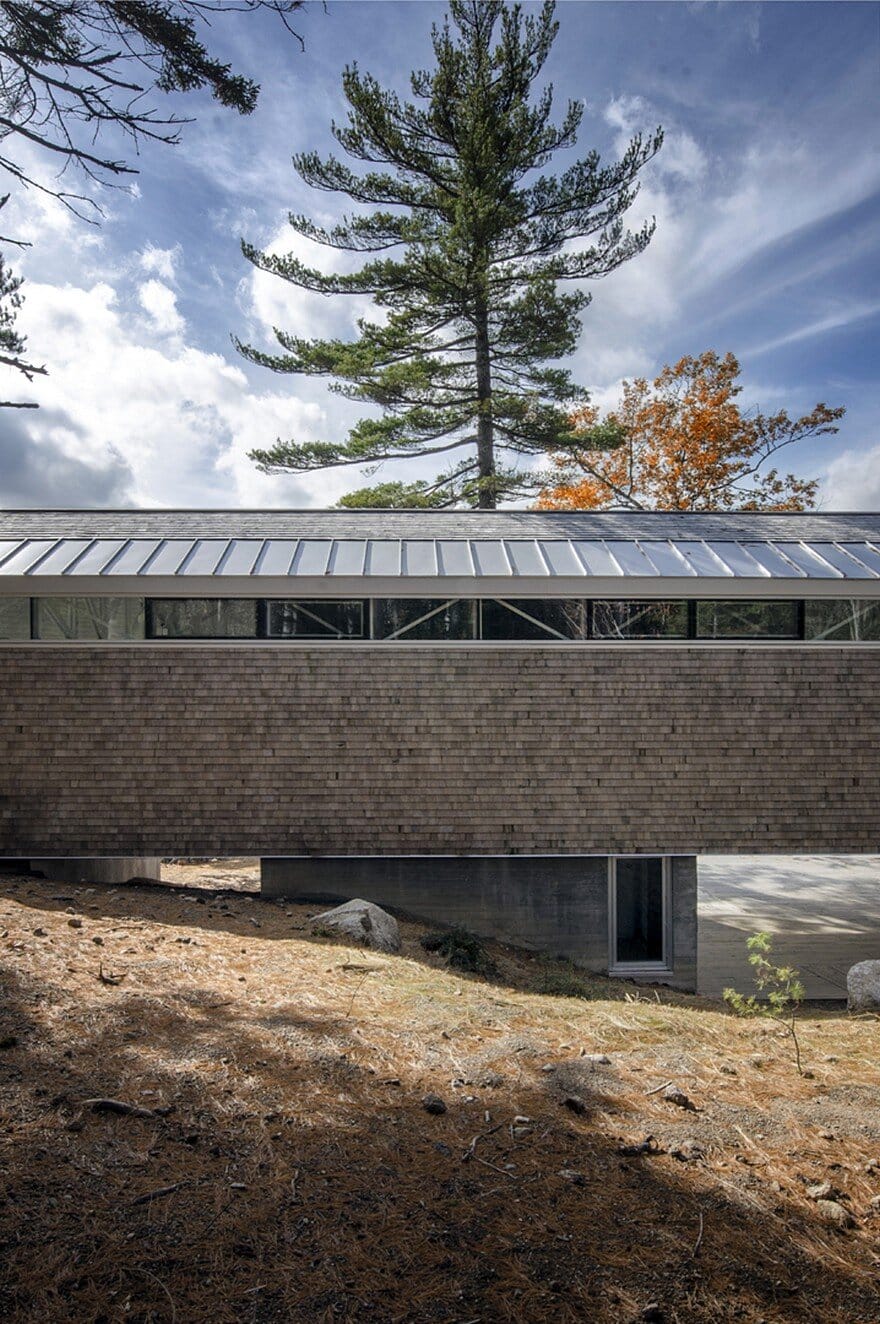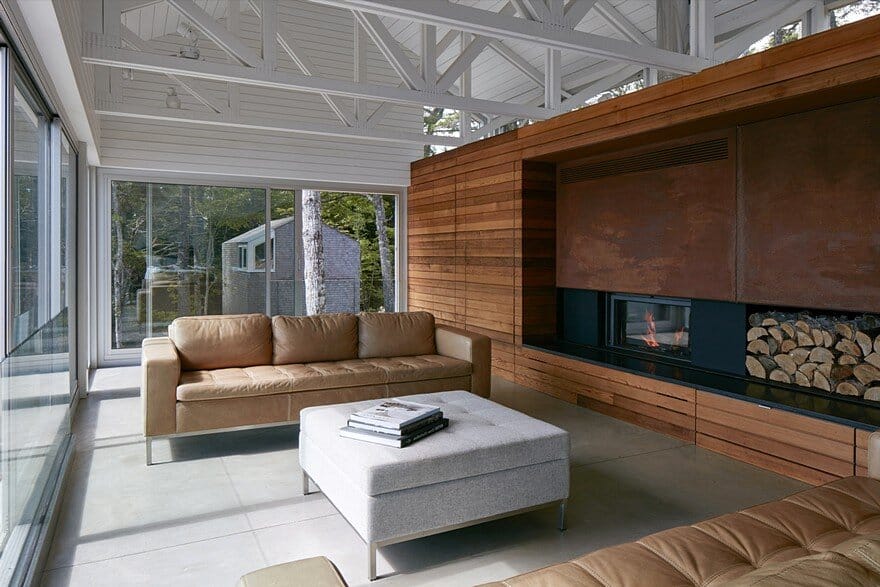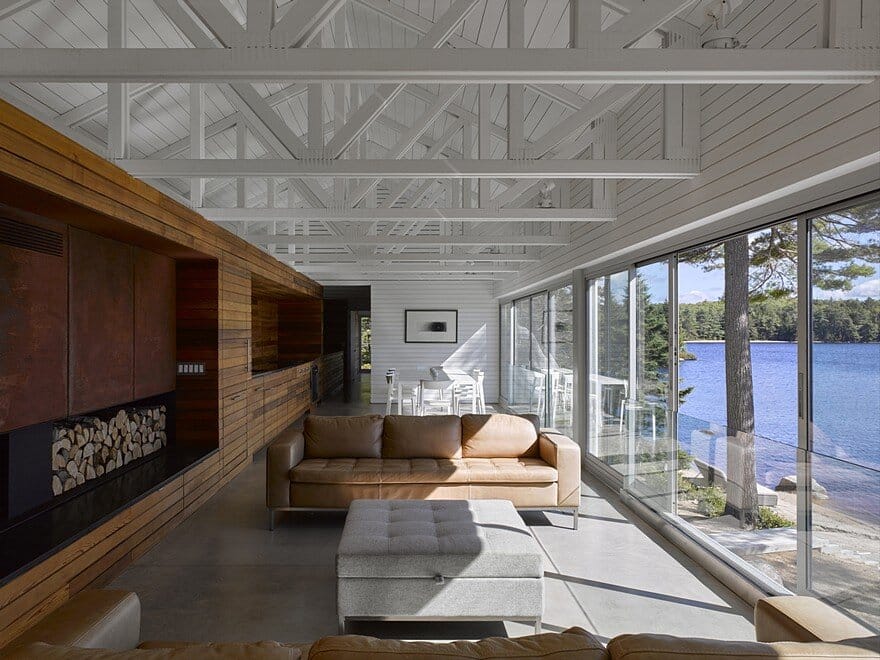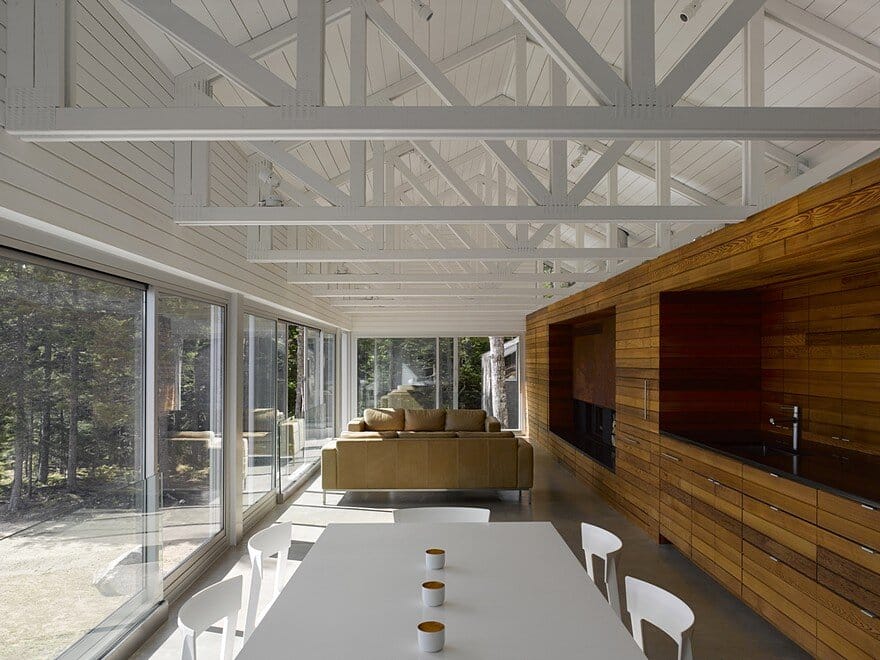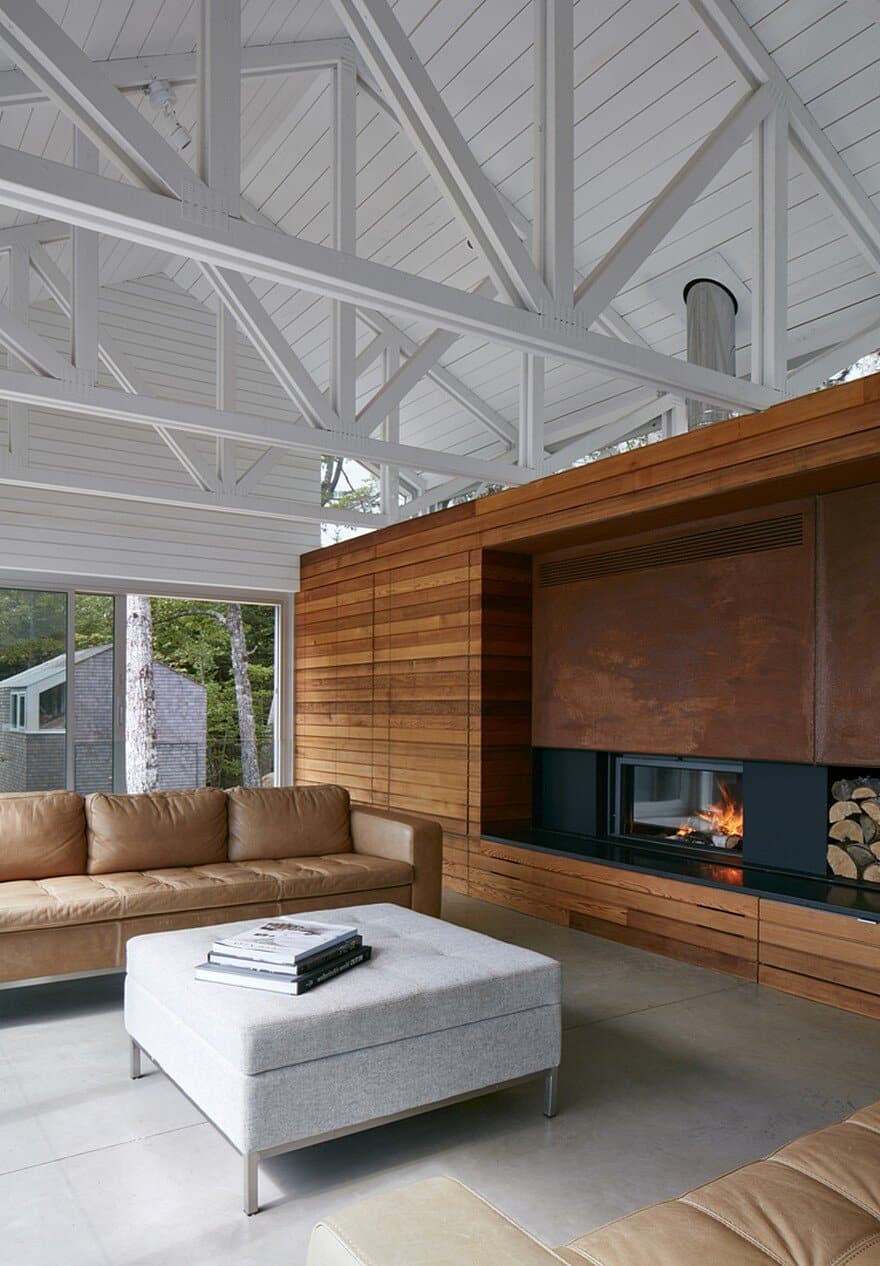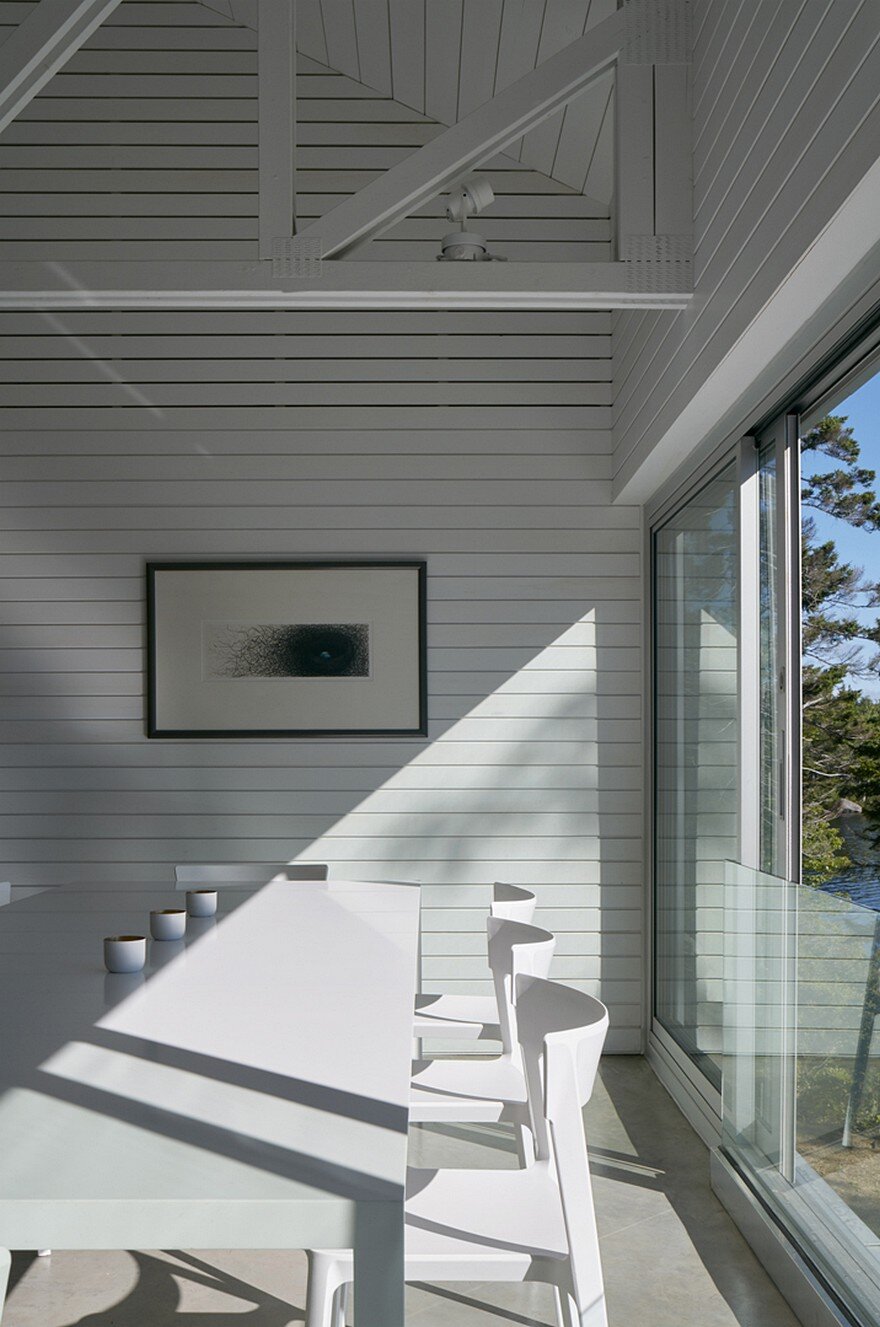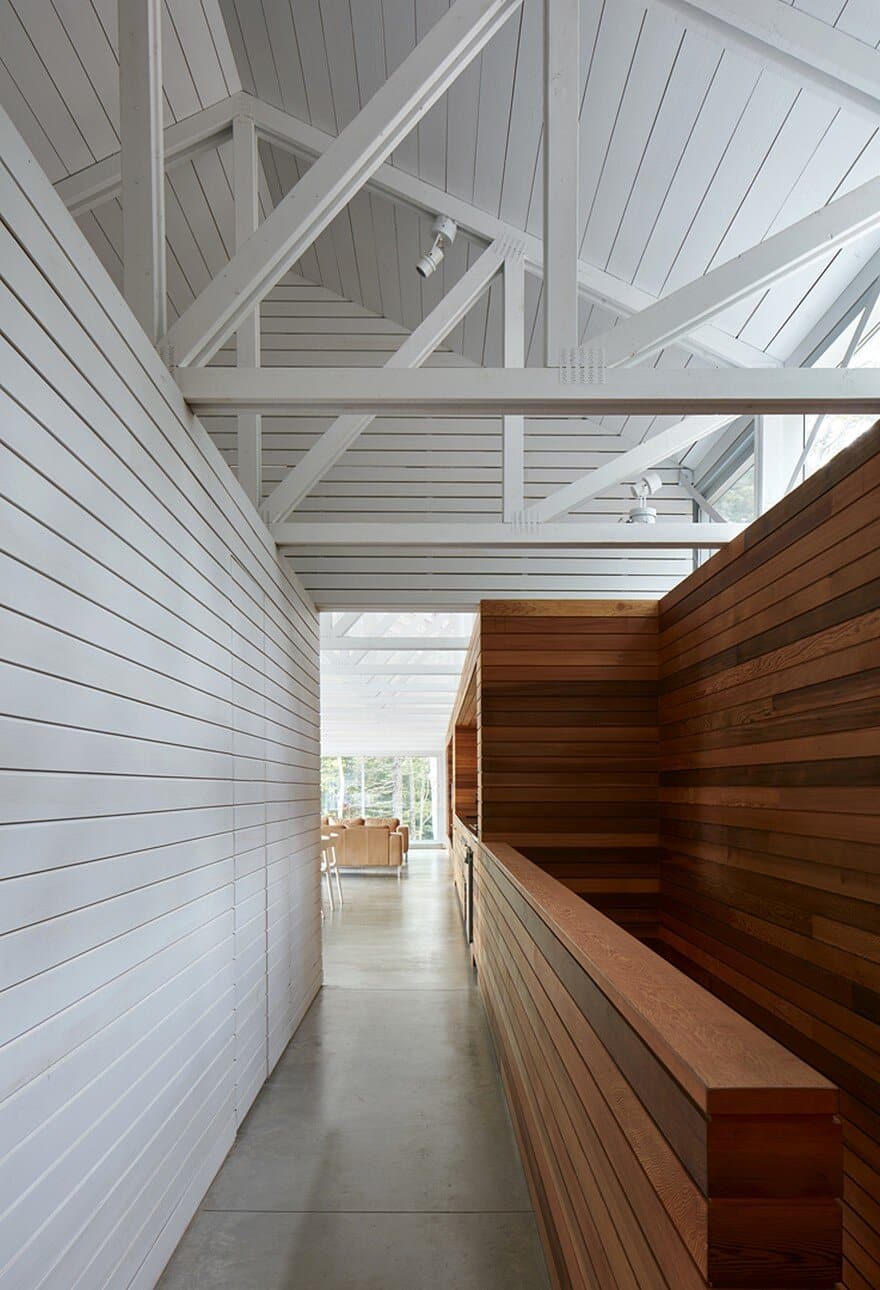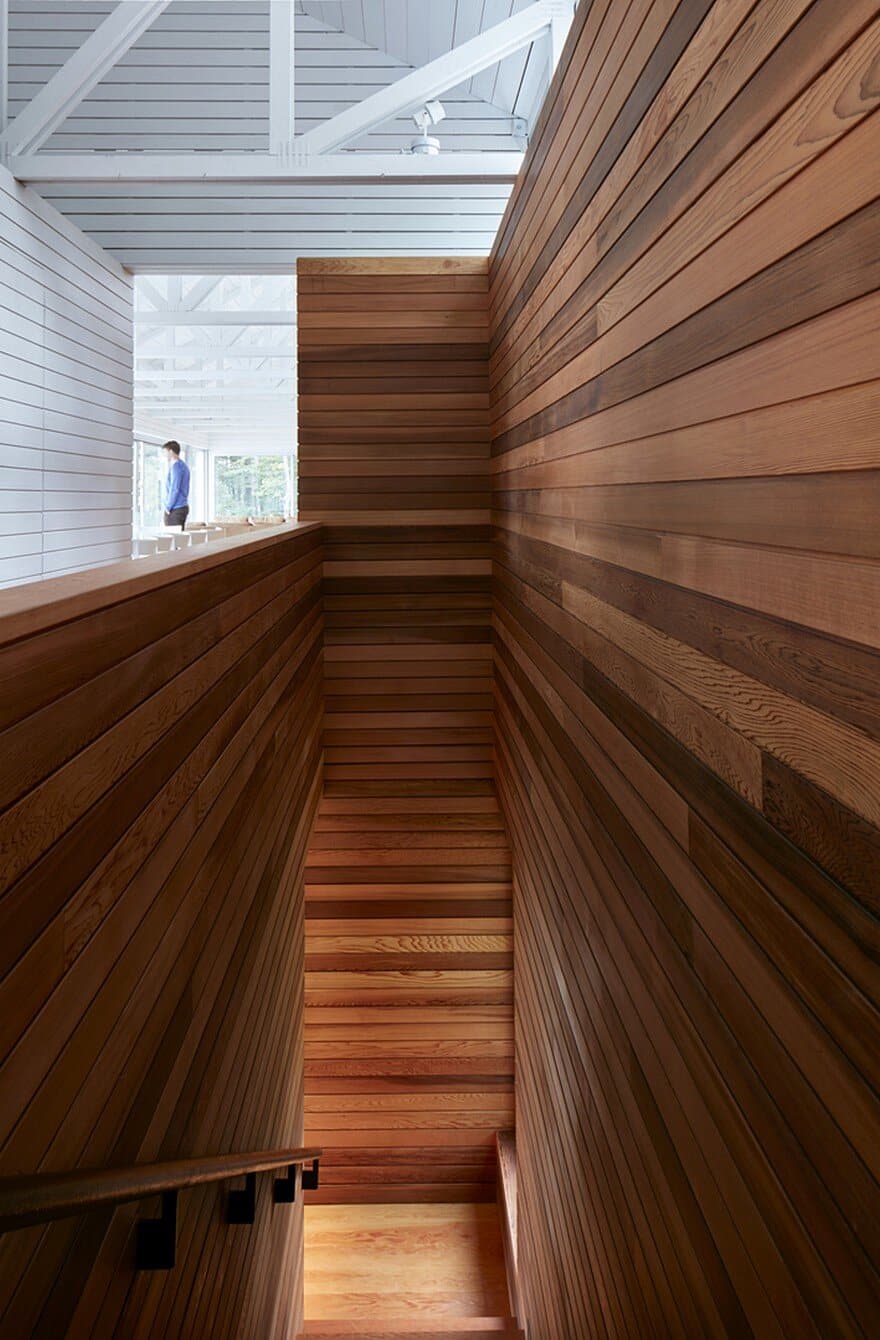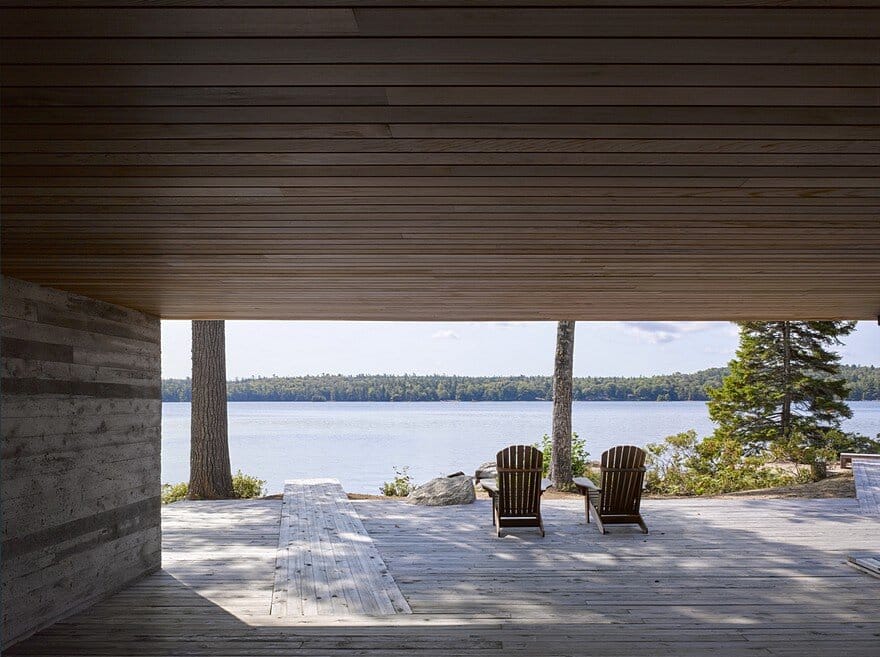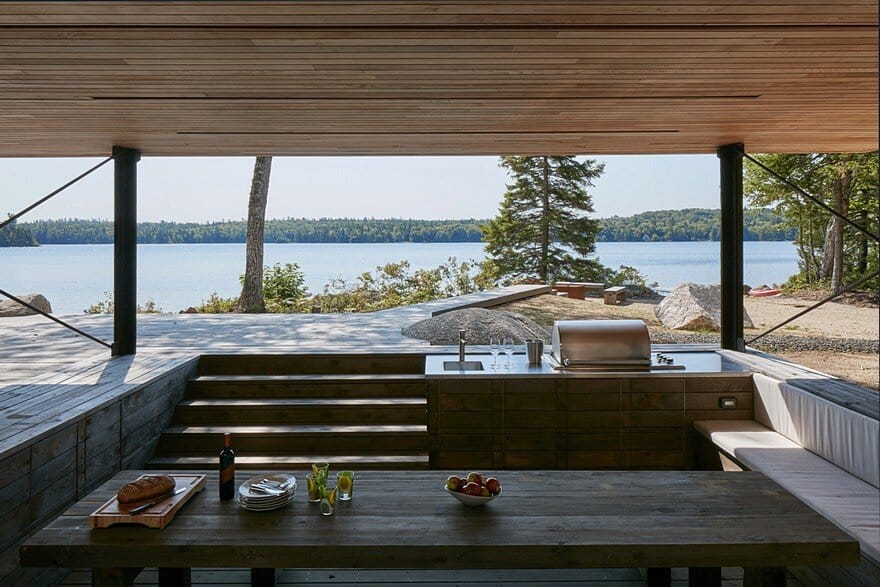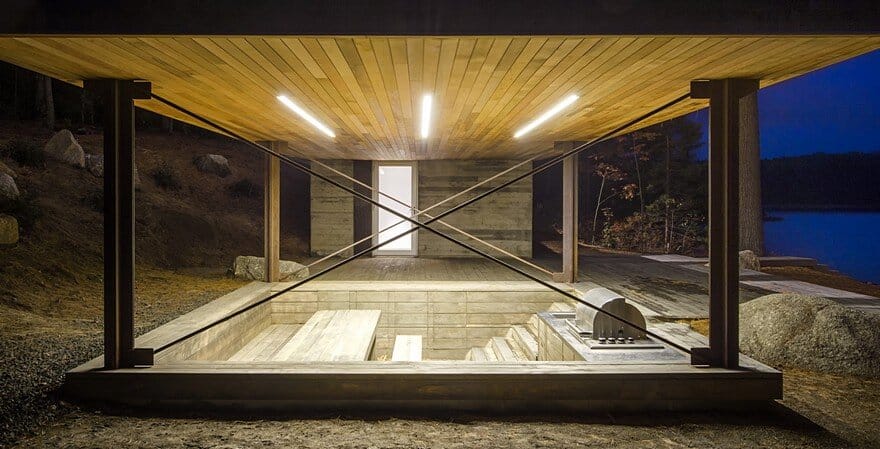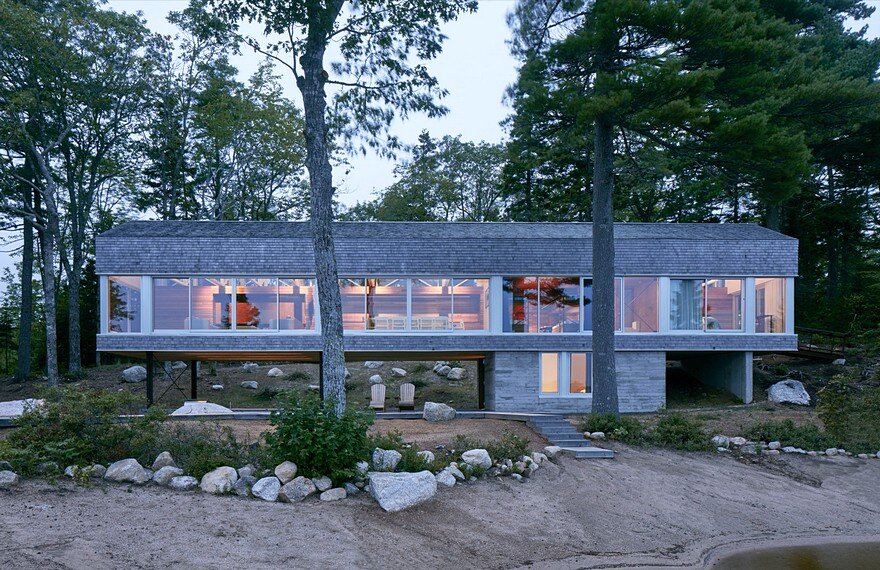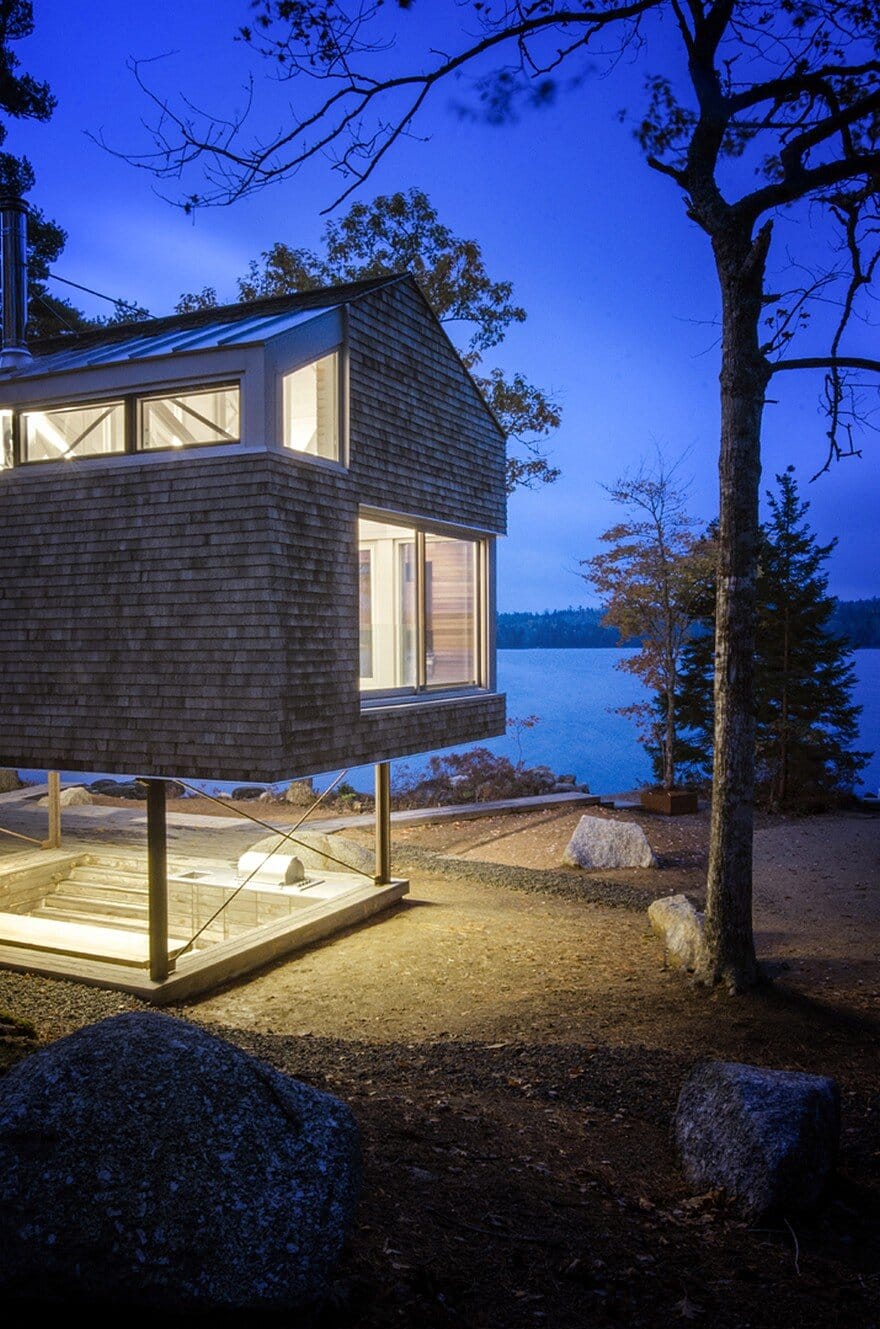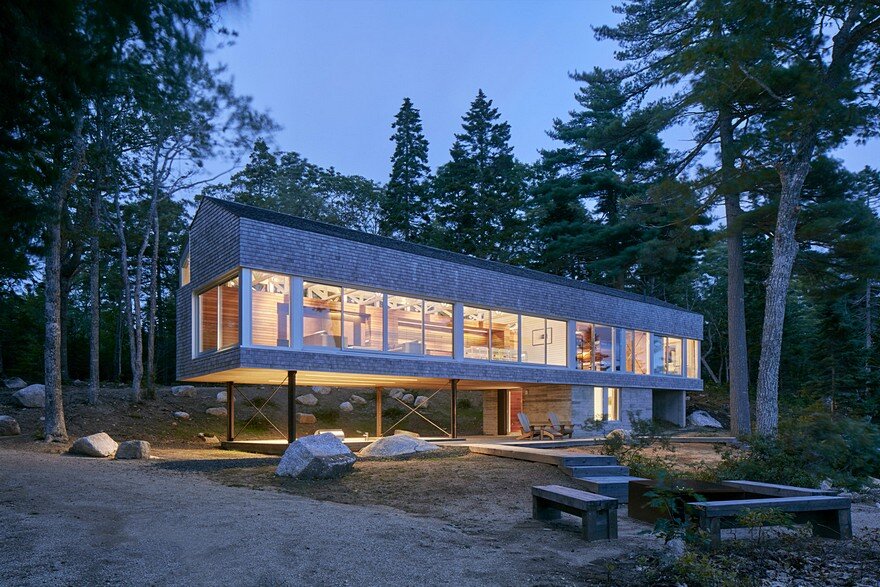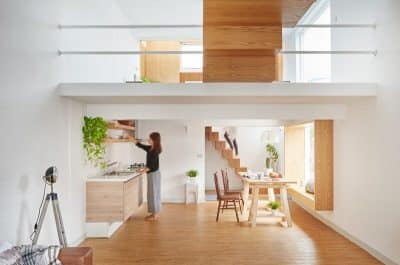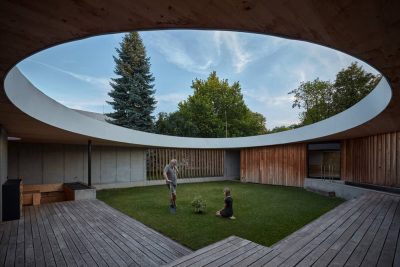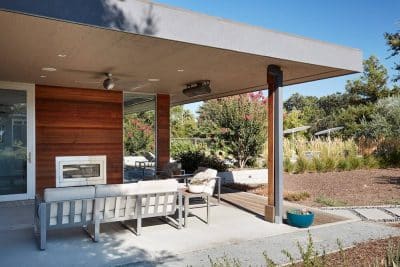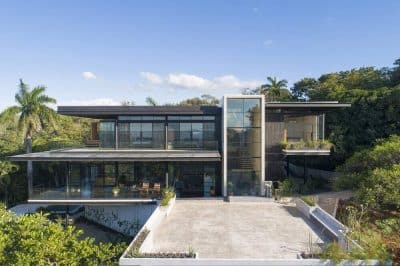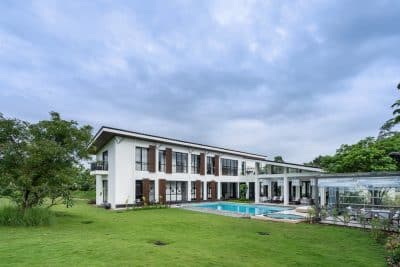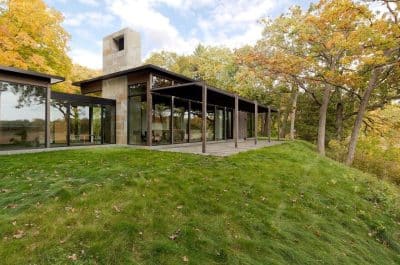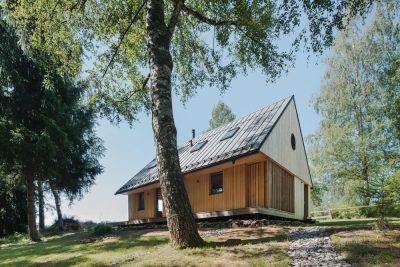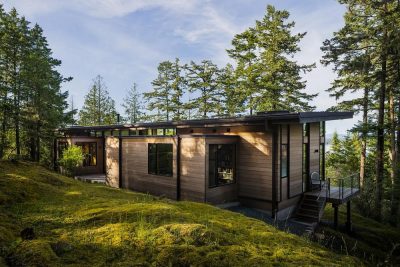Architects: MacKay-Lyons Sweetapple Architects
Project: Mirror Point Cottage
Location: Annapolis, Nova Scotia, Canada
Area: 1,700 sq. feet
Photography: James Brittain and William Green
Text by MacKay-Lyons Sweetapple Architects
Mirror Point Cottage is a vacation home for a local fisherman’s daughter, her Dutch minimalist husband, and their two young children, on a lake near Annapolis Royal in Nova Scotia. Fishing is one of Nova Scotia’s oldest industries, demonstrated by the weathered fishing shacks lining its coast.
The Mirror Point cottage demonstrates the frugality of the Nova Scotian vernacular in an elegant manner. It is formally expressed as an elevated 80-foot long extruded ‘fish shed’ supported by a steel aedicule and a board formed concrete entry core. Spatially, it is a long, south-facing screened porch elevated over the lake for prospect. The thick totemic north wall protects and insulates the interior from the public, north side. The hovering building forms a gate which frames the view to the lake on arrival to the site. The rusted steel aedicule contains a sunken outdoor summer kitchen, which offers a sheltered place at grade for the grandparents to watch the children playing on the beach. The garage/bunkie acts as a miniature version of the main house.
The building is precisely sited using existing topography to maximize southern passive solar energy and views to the lake and to minimize the removal of existing hardwood trees. This hovering building forms a gate which frames the view to the lake on arrival to the site.
The southern façade is entirely operable with large sliding glass panels. When opened up, the façade allows for the elevated volume to act as a giant porch open to the environment and intimately connected to the lake shore. The thick totemic north wall protects and insulates the interior from the public, north side and continuous outsulation on walls and roof provides high R-value and minimizes thermal bridging. This passive solar dwelling has a high thermal mass concrete floor, and hydronic in floor heating.
It is designed with a respect of traditional coastal language and employs a formal inventiveness with common local materials. Materially this is a ‘sweet and sour’ building, combining the highly crafted cedar millwork with banal economical gang nail trusses, which are common in contemporary North American House construction. These ‘gang-nail’ wood structural components were used extensively to reduce the amount of structural steel and cost. These ordinary materials, normally covered up, are celebrated in the living and dining space.
The exterior is clad in local eastern cedar shingles and a standing seam metal roof. With its inherent high level of environmental sustainability, its affordability, and its subtly refined aesthetic, our practice builds upon this understated, everyday language of construction, through projects like Mirror Point.

